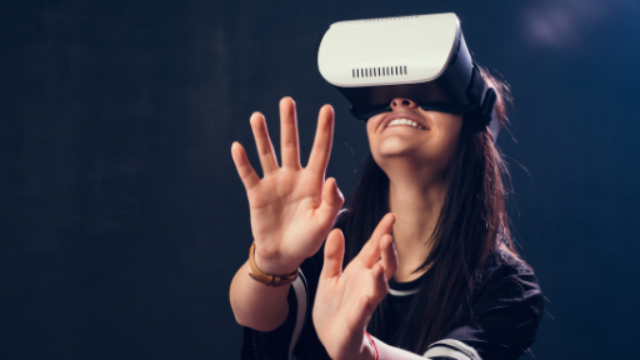
Mar 22, 2022
It has always been the purpose of cinematic storytelling to immerse the audience in the narrative. Colors and noises, animations, Hdr, Cg, and motion were first utilized. Filmmakers are considering virtual reality as a method to draw in more spectators. Viewers may become a part of the tale and travel between displays using the VR movies technology. It's time to figure out whether virtual reality has any promise for the cinematic future. Let's have a look around and see these new possibilities. A brand-new era has begun.
With virtual reality (VR), spectators may become a part of the tale and even a character. It's fantastic. However, I'm stumped. In the VR movies Theater, an immersive display system developed for virtual reality experiences is installed in a specially-constructed theater. Due to this system's size, it's not uncommon for it to need a lot of floor area. As the audience is immersed in a virtual environment that is projected onto a screen in front of them, it is possible to experience the film in an entirely new way. Users have full control over the creation of these visuals, which are often generated in real-time.
We can now convey tales in ways we never could have imagined thanks to VR movies. Despite our best efforts, we misjudged our capabilities. Why? Because you're a part of it. It's critical to keep an eye on the way the narrative is being interpreted. Look at each of these outcomes in further detail. A more realistic depiction of the world
In a theater, you may see a lot of different things at once. It's simple to compare and contrast the material. Presenting more information is a constant goal of VR movies 3d. Wearable devices may be connected to your display through Wi-Fi to enhance the collaborative aspect of this application. The outcome is a meeting that is both more productive and more convenient to participate in. As a primary gathering area for various divisions of the theater industry, the VR movies are available to anyone for frequent usage.
To engage the audience, this form of VR Theater displays multimedia and VR film. This may be done in either monochrome or VR Movies 360 for occulus, making it more noticeable. Wireless gadgets, gestures, touching, and other technologies all contribute to a more immersive visual experience.
Customers may now choose between dual-use contracts with these venues and get a greater return on their investment. Your desktop will look and feel familiar to any operator if your pixel footprint is big enough to accommodate standard Windows-compatible programs and presentation modes. VR movies would definitely improve productivity in the theater industry.
Since the beginning of VR film, creating a realistic virtual setting has been a challenge. Spatial tracking technology was used in previous VR movies to enable a single user to dynamically change the presentation of virtual imagery. As a result, the individual's peers are left with a skewed or distorted viewpoint, leaving the individual with a true point of view. Allow numerous players to have a constantly changing action viewpoint by using today's high frame rate forecasts. As a result, it's feasible to work with the materials in several ways at once. New technologies allow you to see a wide range of information simultaneously, allowing you to manage what each viewer sees.
Using the most recent VR movies, distant parties may now evaluate film while staring at each other as virtual avatars on other VR-enabled displays across the globe.